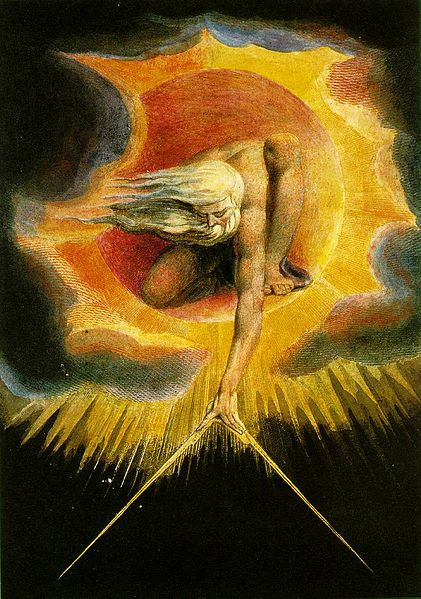via wikipedia:
The Ancient of Days
The title “Ancient of Days” has been used as a source of inspiration in art and music, denoting the Creator’s aspects of eternity combined with perfection. William Blake’s watercolour and relief etching entitled “The Ancient of Days” is one such example.
The Ancient of Days is the title of a design by William Blake, originally published as the frontispiece to a 1794 work, Europe a Prophecy. It shows a figure, the Ancient of Days, crouching in a circular design with a cloud-like background. His out-stretched hand holds a compass over the darker void below. As noted in Gilchrist’s Life of William Blake, the design was “a singular favourite with Blake and as one it was always a happiness to him to copy.” As such there are many versions of the work extant, including one completed for Frederick Tatham only weeks before Blake’s death.
Full resolution (767 × 1,092 pixels, file size: 156 KB, MIME type: image/jpeg)
Thumos
Thumos (also commonly spelled “thymos”) (Greek: θυμός) is an Ancient Greek word expressing the concept of “spiritedness” (as in “spirited stallion” or “spirited debate”). The word indicates a physical association with breath or blood. The word is also used to express the human desire for recognition.
In Homer’s works, thumos was used to denote emotions, desire, or an internal urge. Thumos was a permanent possession of living man, to which his thinking and feeling belonged. When a Homeric hero is under emotional stress he may externalize his thumos, conversing with it or scolding it.
